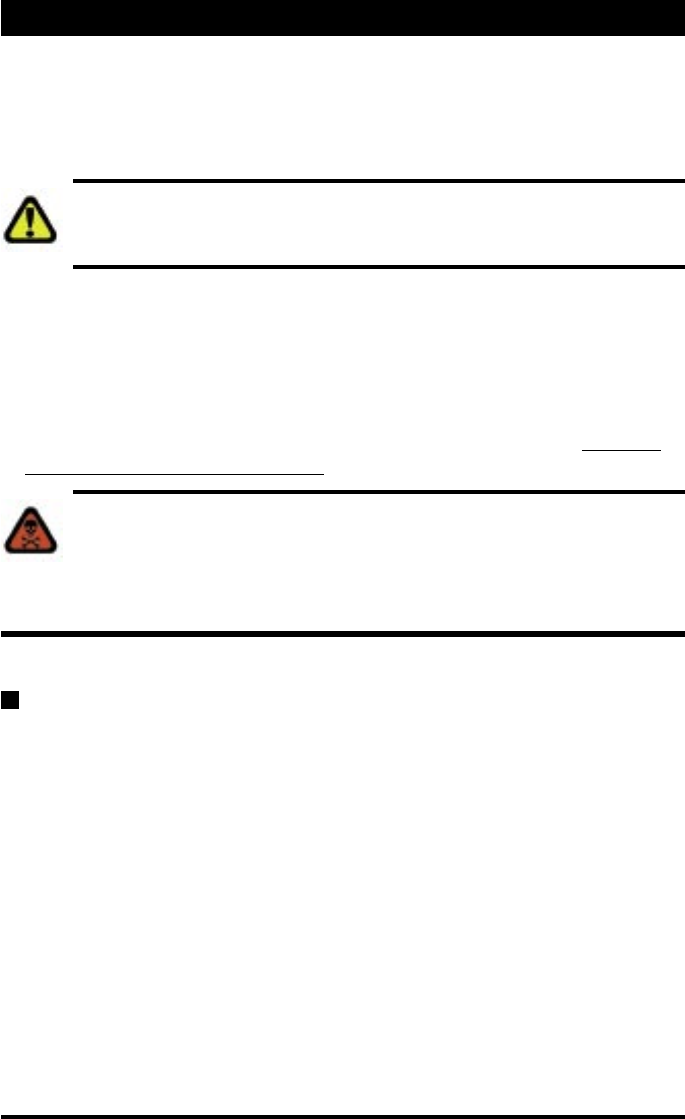
.16 BC Owner’s Manual
XS Scuba, Inc
4. Check the function of the oral inflator button, rapid exhaust valve (REV),
and OPV to ensure a rapid and unobstructed exhaust from each valve.
Fully inflate the BC once again, and disconnect the Power Inflator to listen
for any leakage.
CAUTION: If any leakage can be heard, or if the air cell begins to
deflate within 5-10 minutes, DO NOT attempt to use the BC until it
has received service from an Authorized XS Scuba Dealer.
5. Make a final check of the cylinder band’s tension to ensure that it is as
tight as possible and the cylinder is securely held without any noticeable
slippage. Retighten if necessary.
6. Before entering the water, check the trim weight compartments to ensure
they are closed, and the X-Lock™ Integrated Weight System pockets to
ensure that they are correctly installed into to the BC. Refer to X-Lock™
Weight System Pocket Installation for details.
WARNING: The X-Lock™ Integrated Weight System pockets may fall
out unexpectedly if the buckle connections are not securely fastened.
Involuntary release of both weight pockets can cause a sudden increase
in buoyancy and rapid ascent, and could lead to serious injury or death
due to arterial gas embolism or decompression sickness.
Diving With Your XS Scuba BC
Rules For Personal Weighting
Before diving with your new XS Scuba BC, it is important to establish the
correct amount of weight you will need to wear to achieve neutral buoyancy,
without being too heavy (negatively buoyant) or light (positively buoyant). While
following the procedures taught in an open-water training course, it is important
to observe some basic rules for properly weighting yourself:
1. Be aware of the factors that can cause your personal buoyancy to change,
including personal weight loss or gain, the type and thickness of
the exposure suit you wear, and the buoyancy characteristics of your
cylinder when it is full and empty.
2. Weight yourself in chest deep water while wearing all your equipment,
including your exposure suit and BC, and with the cylinder you will be
using while it contains no more than 500 psi.
3. Experiment with different amounts of weight until you are able to float at
eye level on the surface while holding your breath, and slowly begin to sink
as you exhale.
4. Conduct a personal buoyancy check whenever your body weight has changed,


















